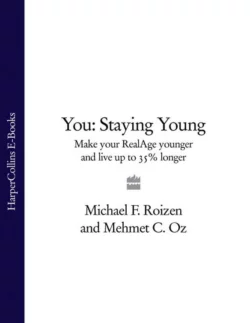You: Staying Young: Make Your RealAge Younger and Live Up to 35% Longer

Michael Roizen и Mehmet Oz
Тип: электронная книга
Жанр: Семейная психология
Язык: на английском языке
Стоимость: 938.97 ₽
Статус: В продаже
Издательство: HarperCollins
Дата публикации: 16.04.2024
Отзывы: Пока нет Добавить отзыв
О книге: International bestselling authors of YOU: The Owner′s Manual and YOU: On a Diet give you all the tools and know-how to stay young and defy the ageing process. Drawing lively parallels between your body and aspects of city life, Drs Roizen and Oz show you how to balance your ‘biological budget’ to ensure your life is long and strong.Million-copy-bestselling authors, Michael F. Roizen, M.D. and Mehmet C. Oz, M.D., explain the mysteries of ageing and how you can dramatically slow the process to live a longer, more vibrant life. Written with their irrepressible quirky humour and granite-solid research, YOU: Staying Young is set to become the definitive manual to remaining young, fit and healthy.If your body is a city, the authors explain, it is up to you as mayor, resident and street cleaner to ensure it remains a vibrant city – after all, who wants to live in a run-down, one-horse town? We all have different genes that influence us in same the way as cities are affected by different geographies. However, it is the way in which a city is run and the residents treat it that have the most overwhelming influence.Posing as local inspectors, Roizen and Oz club together to tackle your city′s education system (stem cells), power plants (mitochondria), electrical grids (brains), transportation routes (blood vessels), landfills (fat), and parks (skin). They then give you the tools to clean up your act and turn your city back into the cutting-edge, party destination everybody will want to see.Look after your body and it will look after YOU.